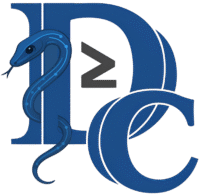Listen to this Post
How the Mentioned CVE Works:
CVE-2025-28862 is a Cross-Site Request Forgery (CSRF) vulnerability in the “Comment Date and Gravatar Remover” plugin for WordPress. This flaw allows attackers to trick authenticated users into performing unintended actions, such as modifying plugin settings, without their consent. The vulnerability exists in versions up to and including 1.0. When a logged-in administrator visits a maliciously crafted webpage, the attacker can forge requests to the plugin’s administrative interface, leading to unauthorized changes. This occurs due to insufficient CSRF protection mechanisms in the plugin, enabling attackers to exploit the trust between the user’s browser and the WordPress site.
DailyCVE Form:
Platform: WordPress
Version: 1.0 and earlier
Vulnerability: CSRF
Severity: Medium
Date: 03/11/2025
What Undercode Say:
Exploitation:
- Crafting Malicious Payloads: Attackers create malicious web pages containing forged requests targeting the plugin’s admin interface.
</li> </ol> <form action="http://target-site/wp-admin/options.php" method="POST"> <input type="hidden" name="option_name" value="malicious_value"> <input type="submit" value="Submit"> </form>
2. Social Engineering: Victims are tricked into visiting the malicious page while logged into their WordPress admin account.
3. Unauthorized Changes: The forged request modifies plugin settings, potentially disrupting site functionality or enabling further attacks.Protection:
- Apply Patches: Update the plugin to the latest version if a patch is released.
- CSRF Tokens: Implement CSRF tokens in all administrative forms to validate requests.
<?php wp_nonce_field('update-plugin-settings', '_wpnonce'); ?> - Input Validation: Sanitize and validate all inputs to prevent unauthorized changes.
$clean_input = sanitize_text_field($_POST[bash]);
- Security Plugins: Use WordPress security plugins like Wordfence or iThemes Security to detect and block CSRF attempts.
- User Education: Train administrators to avoid clicking suspicious links or visiting untrusted sites while logged in.
Analytics:
- Attack Vector: Network-based exploitation via crafted web pages.
- Impact: Unauthorized changes to plugin settings, potential site disruption.
- CVSS Score: 6.5 (Medium) – CVSS:3.1/AV:N/AC:L/PR:N/UI:R/S:U/C:N/I:H/A:N.
Commands:
1. Check Plugin Version:
wp plugin get comment-date-gravatar-remover --field=version
2. Deactivate Vulnerable Plugin:
wp plugin deactivate comment-date-gravatar-remover
Code Snippets:
1. Adding CSRF Protection:
function add_csrf_protection() { if (!isset($_POST[bash]) || !wp_verify_nonce($_POST[bash], 'update-plugin-settings')) { wp_die('Security check failed'); } } add_action('admin_init', 'add_csrf_protection');2. Sanitizing Input:
function sanitize_plugin_input($input) { return sanitize_text_field($input); }By following these steps, administrators can mitigate the risks associated with CVE-2025-28862 and secure their WordPress installations.
References:
Reported By: https://nvd.nist.gov/vuln/detail/CVE-2025-28862
Extra Source Hub:
UndercodeJoin Our Cyber World:

